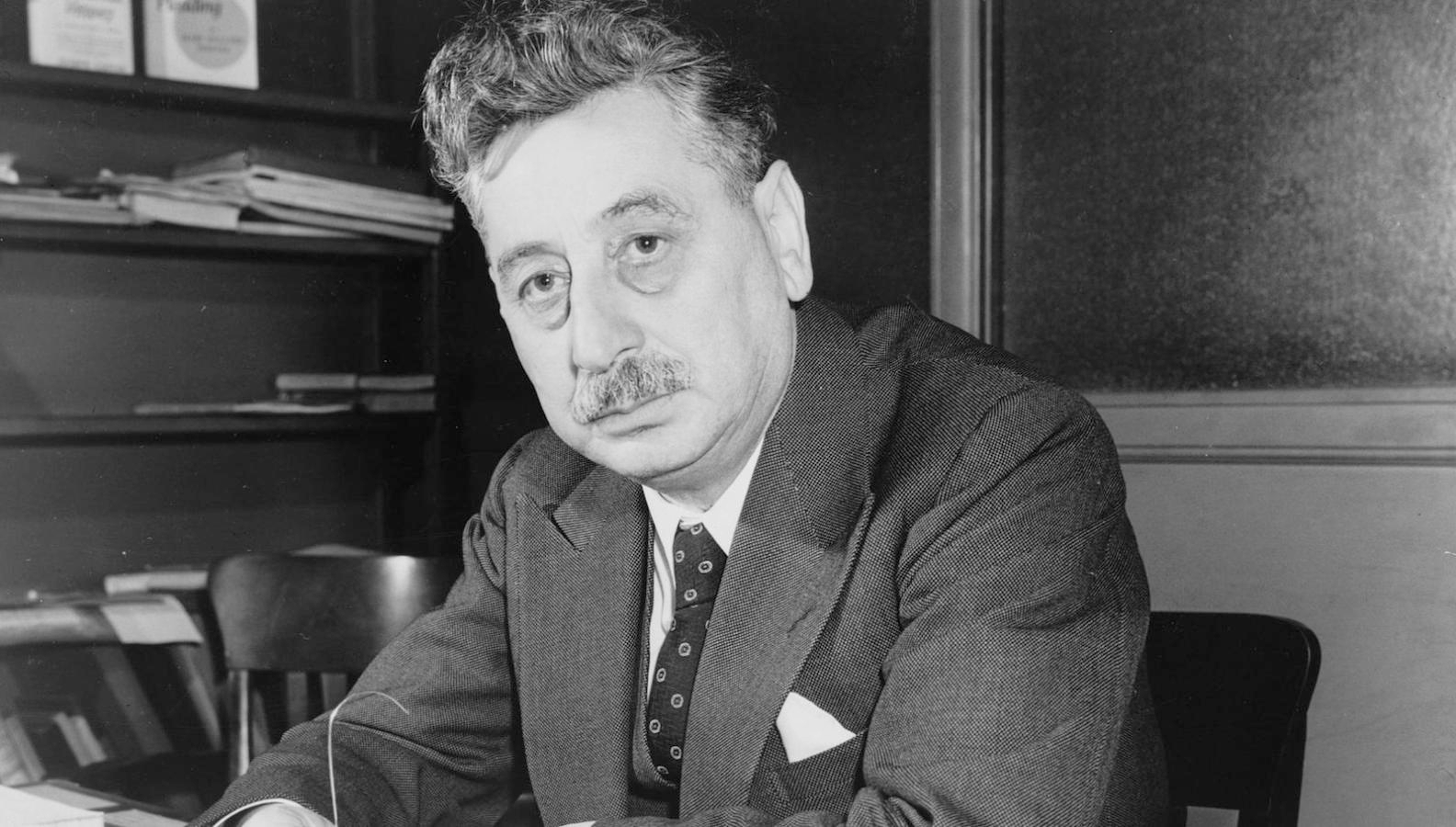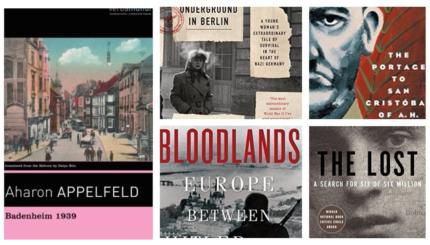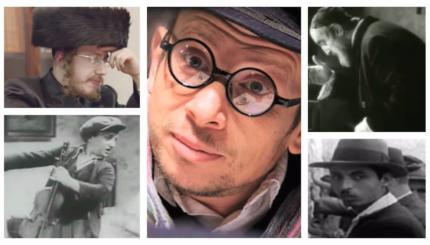Sholem Asch is often mentioned in the same breath as other modern Yiddish fiction-writers: Sholem Aleichem, I.L. Peretz, Mendele Mokher Seforim. But Asch was decidedly quirkier. Not content to write only about life or the Jewish immigrant experience–though he also covered these themes–Asch explored provocative topics like prostitution and lesbianism, and he even tested the limits of Jewish literature by writing in-depth about Judaism’s historical rival, Christianity.
Early Life
Born in a small town outside Warsaw in 1880, Sholem Asch received both a traditional religious education and a more secular Yiddish education. He moved to Warsaw in 1900, and that year he published his first short story, “Moishele.”
In 1904, Asch’s semi-autobiographical short story “The Little Town” gained immediate acclaim. In it, he described shtetl life with precise realism, carefully avoiding the kind of “insider” references that often characterized Yiddish literature about the shtetl. This style made Asch’s Jewish content accessible to both Jewish and non-Jewish readers.
God of Vengeance
Three years later, Asch published a play called God of Vengeance (1907). This officially marked his “coming out” from the shtetl. God of Vengeance broke barriers by becoming the first Yiddish play to debut at the prominent Deutsches Theater in Berlin. The play’s content also defied the norms of Jewish theater, depicting the lesbian relationship between a prostitute and the daughter of a brothel owner.

Help us keep Jewish knowledge accessible to millions of people around the world.
Your donation to My Jewish Learning fuels endless journeys of Jewish discovery. With your help, My Jewish Learning can continue to provide nonstop opportunities for learning, connection and growth.
READ: This Hot Yiddish Play Featured Broadway’s First Lesbian Kiss
Popular audiences were attracted by the deftness and honesty with which Asch approached a scandalous subject. He brought Jewish themes into a decidedly secular realm, as evidenced by this conversation between a prostitute (Manke) and her client.
Manke: Because I don’t want to talk any more. Okay? No more talking.Talking’s never a good idea. I wanna dance.
Orthodox Man: Dance?
(She goes to the Victrola, puts on a jaunty Tin Pan Alley tune.)
Manke: There, come on let’s dance. (She pulls him to his feet.)
Orthodox Man: No, no, I can’t.
Manke: What do you mean you can’t?
Orthodox Man: It’s not allowed…
Manke: “Not allowed?” You’ll pay to shtup me but you won’t dance with me?
Though his work achieved popular success in Europe, Asch emigrated from Poland to the United States in 1916, settling in New York City. He became an American citizen in 1920. Soon the Yiddish Forward newspaper began publishing his work. In 1923, God of Vengeance was performed Stateside — which resulted in the entire cast being arrested on obscenity charges.
During the interwar period, Asch returned briefly to Poland in order to tap into that country’s newly vibrant literary scene. Among Asch’s works of this period, his novel The Mother (1937) stands out as a compelling picture of an immigrant family’s adjustment to the Lower East Side of New York City.
The Christian Trilogy
After returning to America in 1938, Asch began writing in English, producing a trilogy that novelized the rise of early Christianity. In The Nazarene (1939), The Apostle (1943), and Mary (1949), Asch explored the lives of Jesus, St. Paul and the Virgin Mary. He attempted to portray the tenuous beginnings of Christianity as parallel to Judaism, both religions having been persecuted by the Romans.
After the trilogy’s publication, the American press touted Asch as a great literary mind. However, not everyone appreciated the trilogy. The Forward derided him as a Christian sympathizer and stopped publishing his work. Asch had written these novels with a vision of Jewish-Christian reconciliation, particularly after the Holocaust, and his goal had been to expose the common themes behind religious differences. But the Jewish press at the time did not appreciate this message.
But Asch did not revert to a Jewish-centered outlook. Instead, he continued to address a wide range of topics, people, and ideologies in his writing. For example, in East River (1946) — which he published after the second volume of his Christianity trilogy — Asch set the action of his novel in Manhattan, where Poles, Jews, Irish Catholics and Italians are brought together under the same sweatshop roof with one common goal: freedom from unfair labor practices.
Rather than showing Jews in isolation, in the shtetl or in a Lower East Side tenement, East River was groundbreaking for placing Jews and Judaism within the context of other New York ethnic groups.
Asch spent the last years of his life living in Bat Yam, a suburb of Tel Aviv, where he continued to work on novels. In 1957, he died in England. Shortly after his death, Asch’s home in Bat Yam was converted to a museum of his life and work.
At every turn, Asch defied conventions of Jewish writing. He showed that literature could be Jewish without being overtly Jewish, and that many concerns of Jewish culture mirrored universal, controversial, and even outright Christian themes. His openness earned him both criticism and respect from secular and religious audiences alike.



